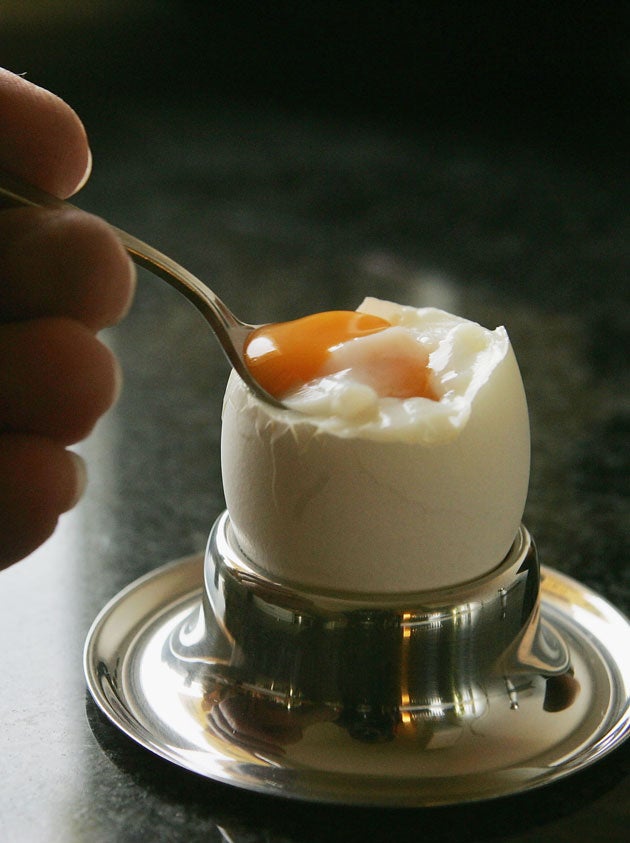The appliance of science
Researchers devote years to devising the ultimate formulae for everything from tea to toast. But why?

Your support helps us to tell the story
From reproductive rights to climate change to Big Tech, The Independent is on the ground when the story is developing. Whether it's investigating the financials of Elon Musk's pro-Trump PAC or producing our latest documentary, 'The A Word', which shines a light on the American women fighting for reproductive rights, we know how important it is to parse out the facts from the messaging.
At such a critical moment in US history, we need reporters on the ground. Your donation allows us to keep sending journalists to speak to both sides of the story.
The Independent is trusted by Americans across the entire political spectrum. And unlike many other quality news outlets, we choose not to lock Americans out of our reporting and analysis with paywalls. We believe quality journalism should be available to everyone, paid for by those who can afford it.
Your support makes all the difference.1. Scientists last week claimed to have solved the problem of a leaky teapot spout. Boffins from Lyon found that coating the inside with a spray of microscopic bumps encourages liquid to roll off and stops irritating dribbling when pouring.
2. Researchers had already discovered the secret of the perfect cuppa. The Royal Society of Chemistry decreed the milk should go into the cup first. It recommends loose-leaf Assam tea, soft water, fresh, chilled milk and white sugar, and drinking it at between 60C and 65C, thus avoiding "vulgar slurping".
3. As for biscuit dunking, Dr Len Fisher at Bristol University found the chocolate digestive was best because tea takes longer to soak through its smaller pores, and its coating helps to prevent cracks. Tips include dunking at a shallow angle and filling a wide-brimmed cup to the top. Digestives should be dunked for eight seconds.
4. Experts at Leeds University spent more than 1,000 hours tasting 700 variations of the bacon sandwich to cook up a formula for the perfect butty. The secret lies in how crispy and crunchy your rashers are. Their recipe for success is N = C + {fb (cm) . fb (tc)} + fb (Ts) + fc . ta where N = force in Newtons required to break the cooked bacon, fb = function of the bacon type, fc = function of the condiment/filling effect, Ts = serving temperature, tc = cooking time, ta = time or duration of application of condiment or filling, cm = cooking method and C = Newtons required to break uncooked bacon. Simple, eh?
5. For vegetarians, Bristol University's finest devised an equation for the perfect cheese sarnie: W = [1 + ((bd)/6.5) – s + ((m-2c)/2) + ((v+p)/7t)] (100 + l/100). W is the thickness of Cheddar in millimetres, b the thickness of bread, d the dough flavour modifier, s the thickness of marge or butter, m the thickness of mayonnaise, c the creaminess modifier, v the thickness of tomato, p the pickle depth, t the tanginess modifier and l the thickness of the lettuce layer.
6. Even perfect toast has its formula. Leeds University's Professor Bronek Wedzicha said it should be toasted to at least 120C, the butter's temperature should be 5C and spread while the toast is between 60C and 70C. For the formulaically minded: Hb = CpaPa(T-35) divided by 60CpbPb, all multiplied by ha. And how to spread your butter: wb= Cpa(T-35) divided by 60Cpb, multiplied by wa.
7. An egg with your toast? Fear not, Exeter University's Dr Charles Williams suggests a medium egg weighing 57g taken from a 4C fridge takes four and a half minutes to cook. To find the cooking time (t) of your egg, use the following "simple" formula. The egg is treated as a "spherical homogeneous object of mass M", Tegg is initial temperature, C the specific heat capacity, and K thermal conductivity of "egg". Dr Williams explains: "If the egg is placed straight into a pan of boiling water at Twater, it will be ready when the temperature at the boundary of the yolk has risen to Tyolk~63C.". Flipping heck.
8. Pancakes? Dr Ruth Fairclough at Wolverhampton University concluded that 100 – [10L – 7F + C(k – C) + T(m – T)]/(S – E) provides the tastiest Shrove Tuesday treat where L is the lumpiness of the batter, C its consistency, F the flipping score, k the ideal consistency and T the pan's temperature. Its ideal temperature is m, S the length of time the batter stands before cooking and E the time the cooked pancake stands before being eaten.
9. To make a pancake you need to know how to crack an egg. Enter Glasgow University's Poultry Research Unit. Researchers found a palette knife is ideal, combined with a fly-fishing action and 30 Newtons of force.
10. Nor can you escape the appliance of science on holiday. Bournemouth University boffins got out their buckets and spades to create the perfect sandcastle. They reckon children should follow the formula OW = 0.125 x S where S is the weight of sand in grams and OW the optimum amount of water needed for the best building mix. Or one part water to eight parts of sand. Torquay has the best grains, but no clues how to combat the tide.
Join our commenting forum
Join thought-provoking conversations, follow other Independent readers and see their replies
Comments